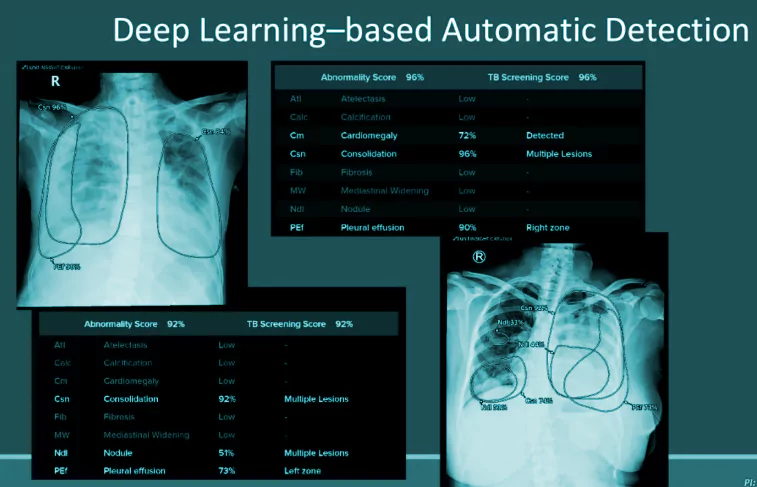Context: Tata Memorial Hospital (TMH), Mumbai, is addressing the shortage of cancer specialists through AI in cancer detection.
Bio-Imaging Bank: A Revolution in Cancer Detection
- TMH established a ‘Bio-Imaging Bank’ utilizing deep learning for an AI-driven early-stage cancer detection algorithm.
- The project incorporates data from 60,000 patients, focusing on head neck and lung cancers.
- Financial Assistance: The Department of Biotechnology funds the project in partnership with institutions such as IIT-Bombay, RGCIRC-New Delhi, AIIMS-New Delhi and PGIMER-Chandigarh.
About the Department of Biotechnology
- It was established in 1986 and serves as the primary agency overseeing research and applications in the field of Life Sciences.
- Function: It serves as the nodal agency, fostering and expediting the progress of biotechnology development in the nation.
About National Cancer Grid (NCG)
- The NCG originated in 2012 as an initiative by India’s government under the Department of Atomic Energy (DAE) and its grant-in-aid institution, the Tata Memorial Centre.
- Objective: Its primary goal is to establish a nationwide network comprising cancer centers, research institutions, patient groups, and charitable organizations.
- Mission: The NCG focuses on standardizing patient care to prevent, diagnose, and treat cancer.
|
What is a Bio-Imaging Bank?
Definition: It is a compilation of radiology and pathology images linked to clinical information, outcome statistics, treatment specifics, and additional metadata.
Mechanism: It employs Biosensing with light to generate non-invasive visual representations of biological processes in cells, tissues, and anatomy for more accurate diagnosis and treatment.
- Bioimaging aims to intervene in biological processes with minimal disruption.
- It is utilized for acquiring information on the 3-D structure of an observed specimen externally, without physical disturbance.
| Biosensing: is the detection of target molecules based on the principles used by a living system such as an immune system.
Bioimaging: It includes methods for visualising fixed biological material for observation. |
What is the Role of AI that Contributes to the Identification of Cancer?

- Data Analysis by AI: It examines extensive databases of radiological and pathological images to identify features associated with specific malignancies.
- Early Identification: AI helps in Early detection of disease. It is achieved by identifying tissue changes and potential cancers.
- Utilization of Patient Data: Comprehensive patient data generated through detailed imaging helps understand behavior, treatment response, disease recurrence, and life expectancy.
| Use of AI in the future in treating Cancers and Tumours
Personalised Treatment: AI is expected to customise treatment approaches according to individual patient profiles, enhancing therapeutic results.
Facilitating Diagnosis: AI has the potential to enable doctors to diagnose intricate cancers seamlessly with just a single click, elevating the precision of cancer treatments.
Continuous Learning: As AI undergoes continuous learning and improvement, it provides increasingly precise cancer diagnoses, leading to better patient outcomes and supporting healthcare professionals. |
-
- AI and machine learning utilize this data to create predictions for cancer survival and guide treatment aggressiveness.
- Cancer Image Bank: Creating a cancer image bank facilitates the development of algorithms for various tumors.
- Treatment responses are assessed solely through images, allowing the avoidance of unnecessary chemotherapy for predicted non-responders.
- Reduced Radiation for Children: Establishing a cancer image bank has led to a 40% reduction in radiation exposure for pediatric patients undergoing CT scans.
- This reduction ensures lower radiation exposure for children while maintaining diagnostic quality without compromise.
- Optimizing Resource Deployment: AI can automate routine responsibilities in pathology and radiology.
- It enables healthcare professionals to concentrate on intricate cases and enhance patient care.
Challenges With AI Use
- Inequality Propagation: AI models, if trained on biased data, can exacerbate existing healthcare disparities, leading to unequal access and diagnosis.
- Data Quality and Quantity: Effective AI models demand substantial amounts of high-quality data that create challenges in accessing and ensuring consistency across diverse populations.
- Privacy Concerns: Utilizing sensitive medical data for AI development raises concerns about patient privacy and data security. Thus, there is a need to implement robust safeguards and transparent data handling practices.
- Regulatory Challenges: Integrating AI into clinical practice necessitates clear regulatory frameworks to ensure safety, efficacy, and ethical use. Establishing standardized guidelines and approval processes is vital for widespread adoption.
- Infrastructure and Expertise: Implementation and maintenance of AI systems require robust infrastructure and skilled professionals. These resources may not be readily available in all healthcare settings, especially in resource-constrained regions, posing challenges.
Also Refer: Casgevy Therapy – A Gene Therapy For Sickle Cell Disease
Conclusion
Artificial intelligence (AI) in treating cancer has great potential to change how we approach healthcare however, all the challenges, like biased data, rules, and insufficient infrastructure, need to be solved for AI to be used fairly and effectively in healthcare.
News Source: Indian Express
![]() 10 Jan 2024
10 Jan 2024

